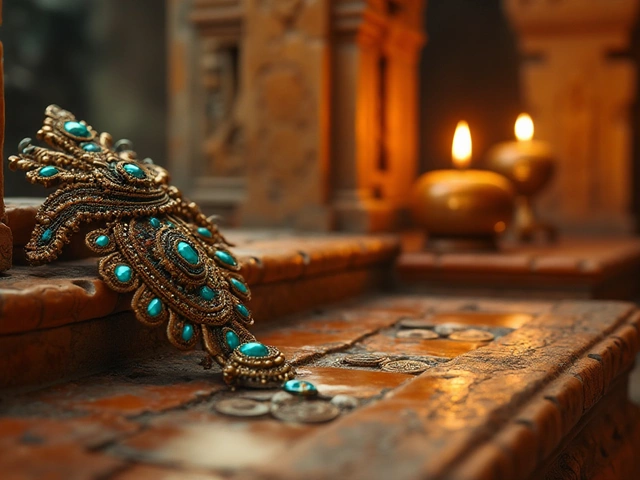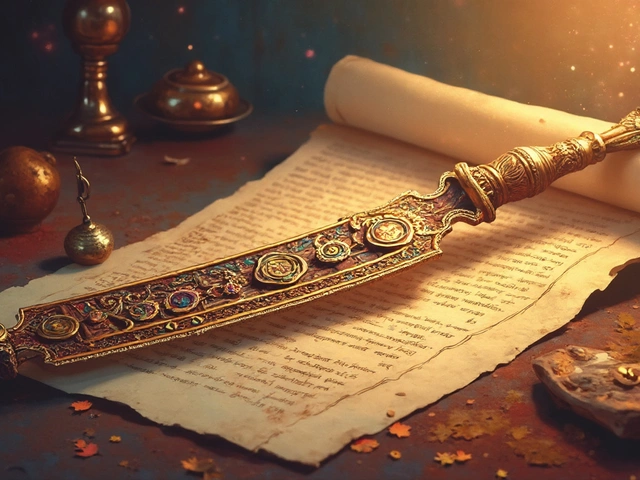Religious Symbol Jewellery: Meaning, Traditions & How to Choose
When you pick a piece of jewellery, it’s often more than just a pretty accessory. In India, many items carry a religious symbol that tells a story, marks a rite of passage, or brings good vibes. Whether you’re looking at a nose stud, a black bead, or a mangalsutra, each symbol has a clear purpose and a rich background.
Understanding these symbols helps you choose a piece that feels right for you, not just looks right. Let’s break down the most common religious symbols you’ll see in Indian jewellery and why they matter.
Common Religious Symbols in Indian Jewellery
Nose Studs & Nose Pins – In Hindu culture, a nose stud (often called a nath) is linked to the goddess Parvati and is traditionally worn by married women. The left nostril is preferred because it is believed to ease childbirth. Today, the style has moved into fashion, but many still honour the original meaning.
Black Beads in Mangalsutra – The mangalsutra is the sacred necklace that a husband gives his wife. The black bead, usually a small black glass or onyx, represents protection against the evil eye and bad luck. It’s a simple touch but carries a strong protective vibe.
Black Bangles – Black bangles are often seen at weddings and festivals. The color black symbolizes strength, mystery, and the ability to ward off negativity. Wearing them can be a personal reminder to stay grounded.
Religious Charms – Small pendants shaped like Om symbols, swastikas, or deity silhouettes are common in bracelets and necklaces. Each charm is believed to bring blessings, health, or prosperity, depending on the deity it represents.
Silver Markings (833, 875) – While not a visual symbol, the hallmark numbers tell you about purity. 833 indicates 83.3% pure silver, while 875 is 87.5% pure gold (21K). Knowing these marks helps you trust the authenticity of a religious piece.
Tips for Picking the Right Symbolic Piece
First, think about the occasion. If you’re buying for a wedding, a mangalsutra with a black bead or a traditional gold nose stud fits the vibe. For everyday wear, a subtle black bangle or a tiny Om charm can add meaning without overwhelming your outfit.
Second, consider the material. Gold and silver both have religious significance, but gold is often linked to wealth and status, while silver is associated with purity and calm. Choose what resonates with you.
Third, check the hallmark. A genuine BIS hallmark (like 875 for gold) ensures you’re getting what the seller claims. It’s a quick way to avoid cheap imitations that might look good but lack cultural authenticity.
Fourth, match the symbol to your personal belief system. Even if you’re not a devout follower, many people wear a symbol for its aesthetic or as a reminder of family values. Make sure it feels right for you, not just for the trend.
Finally, buy from a trusted source. RH Jewellers India offers a curated collection of religious symbol jewellery that’s crafted with care and comes with proper certification. Shopping from a reputable store gives you peace of mind and supports artisans who keep these traditions alive.
Whether you’re adding a new piece to your collection or gifting a loved one, the right religious symbol can be a powerful reminder of heritage, protection, and love. Choose wisely, wear proudly, and let the story behind each piece shine as bright as the metal itself.
Understanding Kirpan: Meaning and Significance Today
Discover the significance of the Kirpan in Sikhism, a symbol of bravery and faith. This article explores its historical roots, modern legal status, and the cultural meaning it holds today. Uncover tips on respecting this sacred object if visiting Sikh temples or being around practicing Sikhs. Gain insight into its importance beyond just being a ceremonial dagger.
The Kirpan: Reflecting Sikh Values and Identity
The Kirpan is not just a ceremonial dagger; it's a powerful symbol of Sikh values and identity. Delving into its historical roots reveals its significance in promoting justice and compassion. This article explores how the Kirpan embodies core Sikh principles and what it means for modern-day Sikhs. Gain a deeper understanding of this sacred item and its role in Sikhism.






